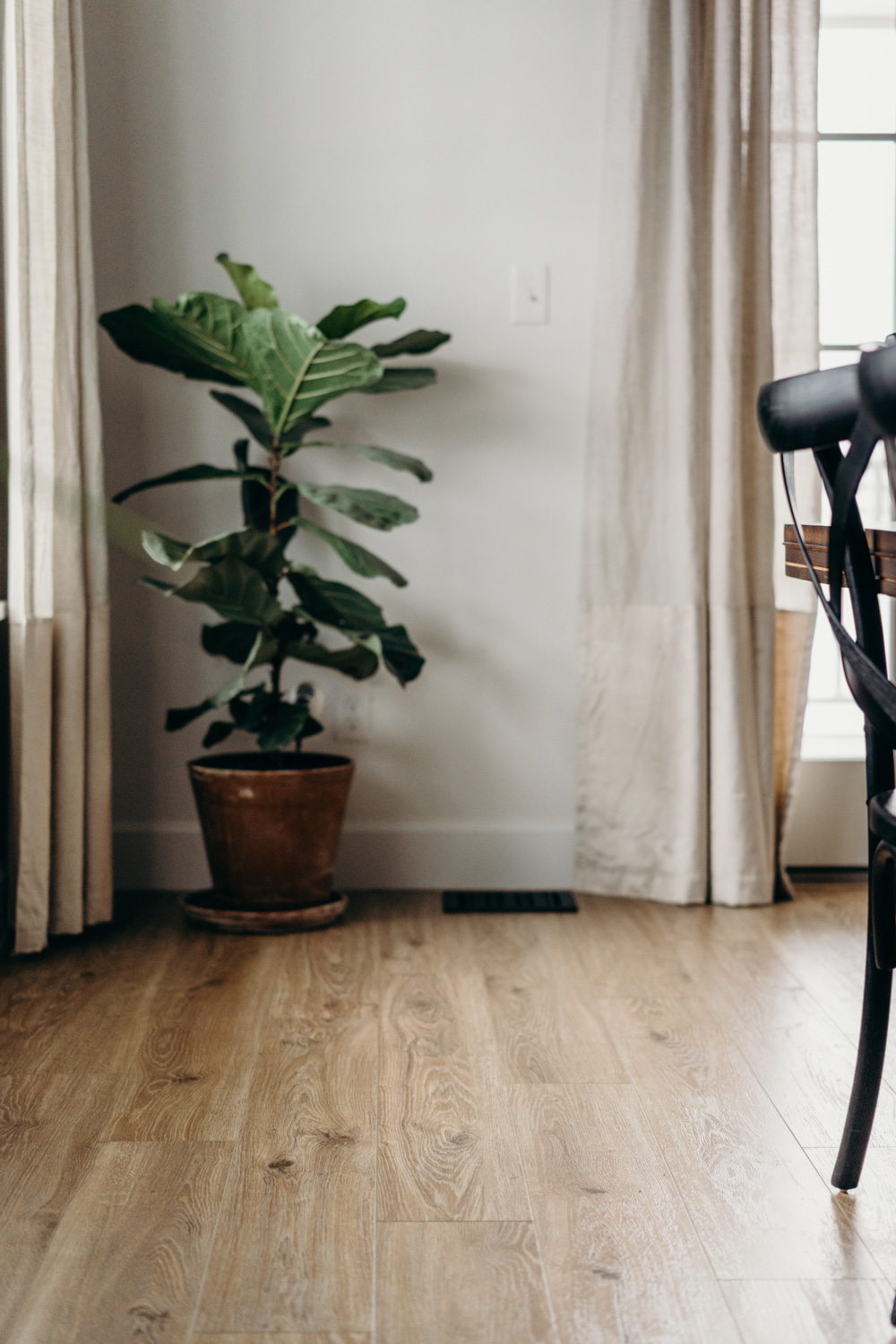Early on in the building process, I knew I didn’t want carpet in our home. With pets – especially hairy ones – I swear carpeted areas never actually feel clean. It also became apparent early on that real wood floors throughout our house were not in our budget or time frame. Our DIY lists were already stacking up and hardwood floors ended up being a priority that just didn’t make the cut. Luckily, faux-wood flooring has come a long way from the original thin, orange-colored panels it once was and there are realistic waterproof laminate flooring out there for all budgets.
What is waterproof laminate?
Laminate flooring is a man-made material consisting of multiple layers – transparent wear layer, image layer, base layer! The image layer is embossed and stained to mimic real wood. Worth noting – the majority of waterproof laminate is merely water-resistant. To be truly 100% waterproof all of the sides have to be coated with the waterproofing, meaning the majority of waterproof laminate is actually water-resistant.
So why waterproof laminate?
If it’s not actually waterproof what is the point of getting waterproof-laminate vs non-waterproof? It comes down to durability. Few laminate floors will survive puddles of water, but waterproof/water-resistant laminate is less likely to scratch and generally higher-quality. Waterproof/water-resistant laminate flooring is also rated to use in areas with lots of moisture, like bathrooms and kitchens.
Pros
Hands down the biggest pro of waterproof laminate is durability. What you sacrifice for character and warmth by not getting real hardwood floors, you gain in durability and headache-free decisions.
Another big pro for us was the ease of installation. We have Equinox TAS Flooring in Brighton and we were amazed at how quickly the floors just clicked together. The rubber pad/base layer was attached to our flooring so we quite literally just clicked our floors into place.
We put down all of our laminate flooring in just over 3 weeks – that’s 2400 sqft!

Cons
The biggest cons for laminate flooring, in my opinion, comes down to design. Any time you have a transition in your flooring, exterior doors, carpet, tile, etc. you will have a transition piece. You can see the transition piece in the first photo where our flush hearth (tile by the fireplace) meets our laminate.
What’s more, stairs will have “stair nosings” on them. I am really surprised that the only time I notice our stair nosings is when I walk down the stairs. Otherwise, they are pretty much not noticeable, but it’s something to be aware of when you are deciding on flooring.
Note: These same cons will be the same with engineered hardwood floors. The only way to get rid of transition pieces is to use real hardwood floors.

Transition piece between the tile + the laminate 
Stair nosings with laminate on stairs
After about six months of living with our Equinox laminate floors, I can honestly say they were the perfect fit for us! I definitely prefer the feel of hardwood floors, but with the amount of snow we get in Montana it’s nice to never have to worry if too much water got on them. Plus, I’ll always welcome the excuse to find a cozy rug for a space!


The Pro’s + Con’s of Waterproof Laminate Flooring
VIEW THE COMMENTS